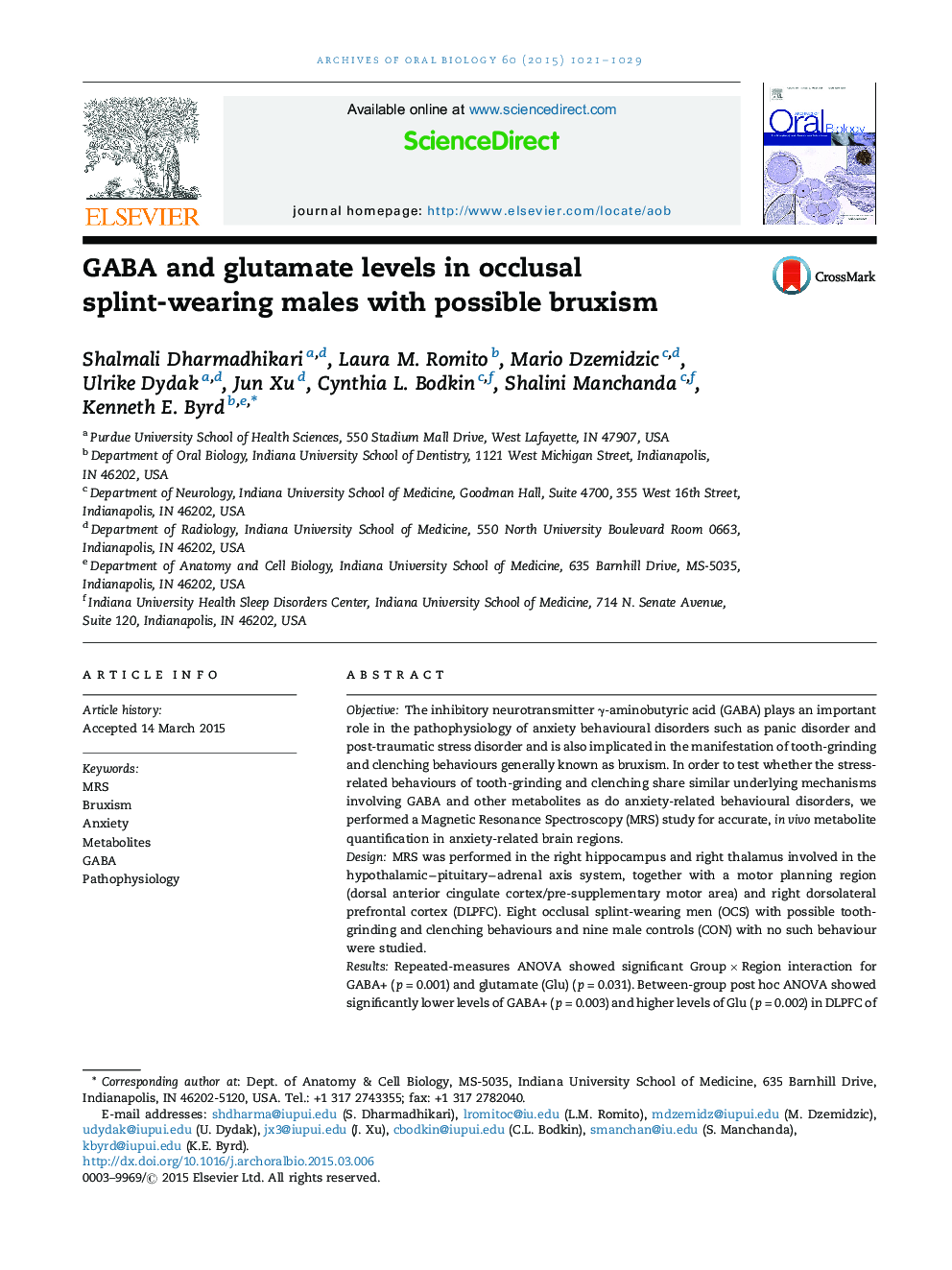| Article ID | Journal | Published Year | Pages | File Type |
|---|---|---|---|---|
| 3120819 | Archives of Oral Biology | 2015 | 9 Pages |
•GABA is implicated in tooth-grinding and clenching behaviours known as bruxism.•MRS is used to see if these behaviours share neurochemical mechanisms with anxiety.•Right-side hippocampus, thalamus, dACC/preSMA, and DLPFC brain regions were analyzed.•MRS spectra obtained from eight occlusal splint-wearing males and nine male control subjects.•Significantly lower GABA+ and higher Glutamate levels in DLPFC of occlusal splint-wearers.
ObjectiveThe inhibitory neurotransmitter γ-aminobutyric acid (GABA) plays an important role in the pathophysiology of anxiety behavioural disorders such as panic disorder and post-traumatic stress disorder and is also implicated in the manifestation of tooth-grinding and clenching behaviours generally known as bruxism. In order to test whether the stress-related behaviours of tooth-grinding and clenching share similar underlying mechanisms involving GABA and other metabolites as do anxiety-related behavioural disorders, we performed a Magnetic Resonance Spectroscopy (MRS) study for accurate, in vivo metabolite quantification in anxiety-related brain regions.DesignMRS was performed in the right hippocampus and right thalamus involved in the hypothalamic−pituitary−adrenal axis system, together with a motor planning region (dorsal anterior cingulate cortex/pre-supplementary motor area) and right dorsolateral prefrontal cortex (DLPFC). Eight occlusal splint-wearing men (OCS) with possible tooth-grinding and clenching behaviours and nine male controls (CON) with no such behaviour were studied.ResultsRepeated-measures ANOVA showed significant Group × Region interaction for GABA+ (p = 0.001) and glutamate (Glu) (p = 0.031). Between-group post hoc ANOVA showed significantly lower levels of GABA+ (p = 0.003) and higher levels of Glu (p = 0.002) in DLPFC of OCS subjects. These GABA+ and Glu group differences remained significant (GABA+, p = 0.049; Glu, p = 0.039) after the inclusion of anxiety as a covariate. Additionally, GABA and Glu levels in the DLPFC of all subjects were negatively related (Pearson's r = −0.75, p = 0.003).ConclusionsThese findings indicate that the oral behaviours of tooth-grinding and clenching, generally known as bruxism, may be associated with disturbances in brain GABAergic and glutamatergic systems.
